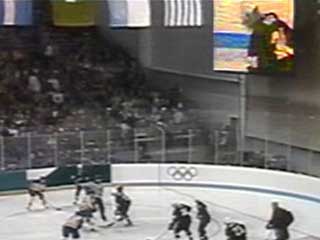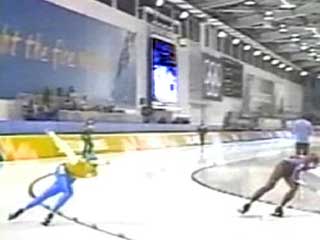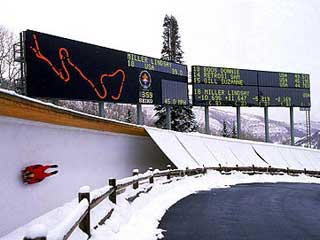Olympics digital screens: Bigger, better, brighter!
Everyone likes the Olympic Games! Even those not particularly interested in sport. Olympics have long become a well-promoted trade brand that sells practically everything: from sports goods to toothpaste. Not surprisingly, all National Olympic Committees are competing harder than athletes for the right to host the Games. The advantages are tremendous: political and commercial profits justify any operational expenses and costs of new sports facilities, security measures, etc. Major Olympic achievements have less to do with athletic performance than with profit-taking during the Games.
Naturally, during the Games advertisers are ready to pay huge sum of money for placing their advertisements on any carriers in the gathering areas for spectators. As always, TV advertising wins major contracts, newspapers and magazines follow closely, outdoor advertising is traditionally third. Outdoor advertising sites covered by TV cameras are especially attractive and do not come cheap. This time the organizers of the Winter Olympics have made their best to block uncontrolled profits from the Olympics by prohibiting the distribution of graphic and video information via the Internet (this explains rather poor quality of our pictures in this issue).
Predictably, we are not so much concerned with the number of Olympic medals as with the topics about digital advertising during the Olympic Games. This type of advertising was represented only too well in Salt-Lake City. The organizers understand well the importance of large TV-quality digital screens for the entertainment of the public. Therefore, all Olympic stadiums were equipped with large electronic screens: Olympic Medal Plaza - 9x12 meter screen, Ice Center - 6x8 m, The E Center - 6x8 m, Rice-Eccles Olympic Stadium – tremendous 16x20 m, at the Skiing Stadium - 9x12 m, Ski Jumping Stadium - 9x12 m, Utah Olympic Park for bobsleigh competitions - 6x8 m, Ski Slalom Area - 9x12 meter screen (and possibly more).
 |
 |
| Large digital screen in E Center | Large digital screen in Ice Center |
As always, the digital screens broadcast competitions and repeat most exciting moments of athletic performance. But during the breaks they turn into a major advertising media.
 |
 |
| Huge digital screen and display in Utah Olympic Park | Giant digital screen and display in Ski Slalom Area |
During this Olympiad the organizers have come up with a new entertainment for the public: “screen kiss”. During breaks TV cameras roam the audience searching for the kissing couples, and the program editor forwards the enlarged image to huge digital screens in the stadium. The reaction from the audience is highly predictable. As a result, the public is happy, attention to and awareness of the digital screens grows, thus, making the advertising efficiency much higher.
What is essential for the authors of our magazine, for screen manufacturers world over, for advertisers and sponsors – all Olympic digital screens are large, the smallest being 6x8 meters. This is understandable: who in a huge stadium would pay attention to a bright but insignificantly small TV screen? Naturally, the dimensions of Olympic screens must stay in some proportion to dimensions of stadiums or outdoor areas that they are meant to cover. Small screen - small profits. And the appetite of Olympic businessmen is practically insatiable. That is the reason for the Olympic digital screens being huge. As, in fact, they should be everywhere!
One more interesting event with direct reference to digital screens was described by several informational agencies. During the Closing Day some disturbances were reported at the main city square in Salt-Lake City caused by switching off of the huge informational and advertising screen that was operating there. The public was thirsty for entertainment but someone has switched the digital screen off! You see, the digital advertizing is important!





